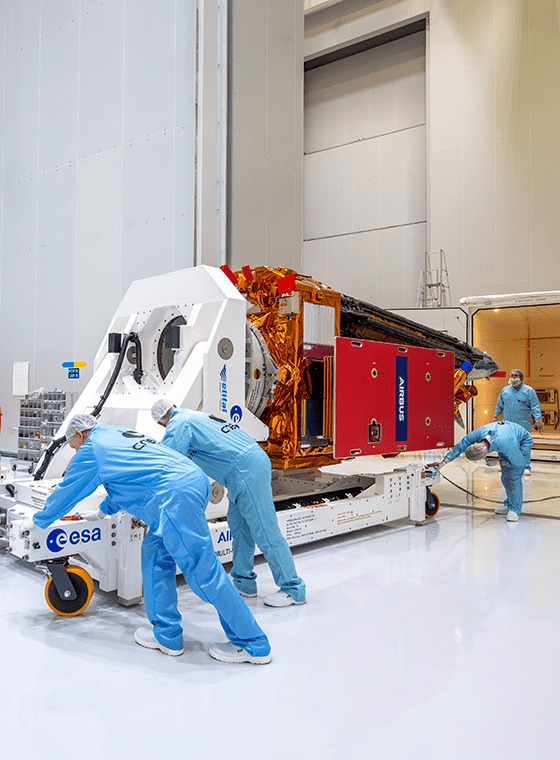- On April 29, 2025, Arianespace will launch Biomass, the European Space Agency’s Earth Explorer satellite with a Vega C rocket.
- The Biomass mission is designed to deliver crucial information about the state of our forests and how they are changing, and to further our knowledge of the role forests play in the Earth’s carbon cycle.
- As the launch service provider, Arianespace contributes to Europe’s autonomous access to space, enabling ESA to carry out a critical mission in environmental monitoring and climate research.
On Tuesday April 29th, 2025, at 6:15 a.m. local time (09:15 a.m. UTC, 11:15 a.m. CEST), Arianespace is to launch the European Space Agency’s (ESA) Earth Explorer Biomass satellite from Europe’s Spaceport in French Guiana. The mission called “VV26”, will place its passenger on board a Vega C launcher, into Sun-Synchronous Orbit at an altitude of around 666 km. Spacecraft separation will occur 57 minutes after lift-off.
ESA’s Earth Explorers satellites are recognised as being among the world’s leading research missions, delivering groundbreaking scientific insights about Earth’s complex systems. Forests, the ‘Earth’s green lungs’, absorb around 8 billion tonnes of carbon dioxide from the atmosphere each year. Deforestation and degradation, particularly in tropical regions, are causing carbon stored in forests to be released back into the atmosphere. Quantifying the global carbon cycle is essential to understanding the subsequent implications for our climate.
The Biomass satellite carries the first P-band synthetic aperture radar to observe Earth from space. Thanks to its long wavelength, around 70 cm, the radar signal can penetrate all the way through the forest canopy. This allows it to collect information on the height and structure of different forest types and measure the amount of carbon stored in the world’s forests and how it changes over time. In addition, the Biomass mission will map subsurface geology in deserts, the ice structure of ice sheets and the topography of forest floors.
Biomass, manufactured by Airbus Defence and Space, will spend at least five years making detailed observations and witnessing at least eight growth cycles in the world’s forests. Observations from this new mission will also lead to better insight into the rates of habitat loss and, as a result, the effect this may have on biodiversity in the forest environment.
The VV26 launch at a glance:
- 353rd launch by Arianespace
- 4th Vega C launch
- 10% of the satellites launched by Arianespace are Earth observation satellites
- 52nd mission for the European Space Agency
- 146th spacecraft built by Airbus Defence and Space launched by Arianespace
